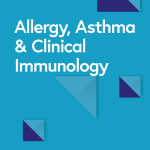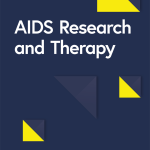Cell lines
The human gastric epithelial cell line GES−1, human GC cell line AGS, and murine GC cell line MFC were purchased from the National Infrastructure of Cell Line Resource (NICR, China). All cells were cultured in DMEM (Gibco, USA) supplemented with 10% fetal bovine serum (FBS; Gibco, USA), 100 U/ml penicillin and 100 µg/ml streptomycin in a humidified incubator with 5% CO2.
Human tissue samples
A total of 30 pairs of GC tissues and adjacent normal tissues were collected from patients who were diagnosed with GC and underwent surgery at the Fourth Affiliated Hospital of Hebei Medical University from 2017 to 2022. All samples were obtained with informed content and preserved in lipid nitrogen for further use. Two experts confirmed histological and pathological diagnosis and performed according to the International Ethical Guidelines for Biomedical Research Involving Human Subjects. All related procedures were conducted with the approval of the internal review and ethics boards of the Fourth Affiliated Hospital of Hebei Medical University (approval number 2019ME0039).
sEVs isolation and identification
Cells cultured in 10% vesicle-depleted medium without FBS were prepared for sEVs extraction. Conditioned medium (CM) was collected after 48h incubation and centrifuged at 300 x g for 5 min, followed by 3000 x g for 15 min to remove all cell debris and apoptotic vesicles. CM was then purified through a 0.22 μm filter (Millipore, USA), followed by ultracentrifugation spins at 100 000 x g for 70 min at 4 °C to pellet sEVs. Purified sEVs were collected through washing pellet with PBS and cetrifuging at 100 000 x g for 70 min at 4 °C. Finally, sEVs were resuspended in PBS and remaining pellet was reconstituted and deposited at -80 °C.
Transmission electron microscope (JEOL, Japan) was applied to identify the morphology of sEVs. Identification of sEVs protein markers was conducted by Western blot. The sEVs concentration and size were measured using a nanoparticle tracking analysis (NTA) with NanoSight N300 (Malvern, UK) and analyzed with NTA analytical software version 3.4.
sEVs uptake experiment
sEVs purified from GC cells were co-cultured with PKH−26 red fluorescent Cell Linker Mini Kit (Sigmae-Aldrich, USA) at room temperature for 5 min. CD8+T cells were cultured in laser confocal culture dishes and co-cultured with PKH26-labeled sEVs for 24h. Then the nuclei of CD8+T cells was colored with 4,6-diamidino−2-phenylindole (DAPI) for 10 min, and the staining was observed with fluorescence microscope (Olympus FV3000, Japan).
FISH assay
FISH was conducted according to manufacturer’s constructions as previously described [25]. GC cells were cultured in confocal dishes and fixed with 4% paraformaldehyde for 25 min. Then, cells with Cy3-labeled circ_0001947 probe (GenePharma, China) were hybridized at 37 °C overnight. DAPI was used for counterstaining the cell nuclei. After that, the images of circ_0001947 subcellular distribution were captured under a ZEISS LSM800 confocal microscope (Carl Zeiss AG, Germany).
RNase R treatment and actinomycin D assay
For RNase R treatment, 2 µg of total RNA extracted from AGS cells was incubated with RNase R (Epicenter Technologies, USA) for 30 min at 37 °C to degrade liner RNA. The stability of circAFF2 and AFFF2 mRNA was tested by qRT-PCR.
For Actinomycin D assay, after 24h incubation of AGS cells in 6-well plate, 2 mg/l actinomycin D (Sigma, USA) was added into each well for 4, 8, 12, 16h respectively. Then the cells were collected at the indicated time points for qRT-PCR.
RNA extraction and qRT-PCR
Total RNA was extracted using TRIzol reagent (Invitrogen, USA) according to the manufacturer’s recommendations. cDNA was reverse described with a PrimeScriptTMRT Reagent Kit (TaKaRa, Japan). qRT-PCR was carried out through Quantstudio™ DX system (Applied Biosystems, Singapore). β-actin was used as internal control. Relative expressions were calculated by using 2−∆∆CT method.
Plasmid construction and cell transfection
To construct the circ_00001947, circ_0004592 and circ_0077736 knockdown plasmid, small hairpin RNAs (shRNAs) targeting the junction region of related circRNAs were synthesized and cloned into the pGPU6/GFP/puromycin vector (IGE Biotech Co, China). GC cells were tansfected with plasmids following the manufacturer’s instructions according to previous research [26]. The miR−661 mimics, miR−671−5p mimics, miR−661 inhibitors, and miR−671−5p inhibitors were purchased from GenePharma Company (Shanghai, China) and Lipofectamine RNAimax (Invitrogen, USA) was used for transfection.
Dual-luciferase assay
The wild-type (WT) and mutant (MT) circ_0001947 were recombined into psiCHECK−2 (Promega, USA) for the luciferase assay. 4 × 104 HEK293 cells per well were plated into 24-well plates overnight and co-transfected with a WT vector or MT vector and miRNA mimics or control mimics with Lipofectamine 2000. After 48h co-transfection, the luciferase activity was detected using dual-luciferase reporter assay system (Promega, USA).
CCK−8 assay
CCK−8 assay was performed to assess the proliferation ability of GC cells. AGS cells were planted on 96-well plates at a density of 2 × 103 per well, then 20 µl CCK−8 solutions was added into each well at the indicated point of 24, 48, and 72h of culture. Finally, the optical density (OD) was measured at 450 nm.
Cell migration and invasion assays
For transwell assay, cells were seeded into a BD Transwell chamber (CoStar, USA) with 24 wells. After 24h, the cells across the membrane were fixed with 4% formaldehyde and stained by 0.2% crystal violet for 20 min to identify the migrated and invaded cells. The stained cells were calculated in three random fields.
For wound healing assay, cells were cultured in a 6-well plated at a density of 2 × 104 per well and scraped using 1000 ml pipette tips. The artificial wounds were detected at 0 and 24h after scratch.
CD8 + T cell isolation
10 ml fresh peripheral blood were collected from healthy donors and human CD8 + T cells were isolated and purified peripheral blood mononuclear cells (PBMCs) by an Easy-Sep™ Direct Human CD8 + T Cell Isolation Kit (STEMCELL Technologies, Canada). Afterwards, CD8 + T cells were plated into 24-well plates and incubated with anti-CD3/anti-CD28 antibodies (R&D Systems, USA) at 2 µl/well and IL2 (Abcam, UK) at 20 ng/ml for 48h to activate.
sEVs incubation with CD8 + T cell
sEVs (500 µg) derived from GC cells were seeded into 12-well plates and preactivated CD8 + T cells were added. CD8 + T cells were analyzed by using flow cytometry after 24h incubation.
Flow cytometry
Isolated cells from PBMCs were processed into single-cell suspesions and incubated with surface markers for 20 min, on ice in the dark. Then BD Cytofix Kit (BD Biosciences, USA) was used for stain intracellular markers according to the manufacturer’s instructions. The expressions were detected using BD Accuri C6 flow cytometer (BD Biosciences, USA). The following surface and intracellular markers were used: CD3 (BD Biosciences, 341091), CD45 (BD Biosciences, 348795), CD8 (BD Biosciences, 341051), PD−1 (BD Biosciences, 570479), Tim−3 (BD Biosciences, 567124), IFN-γ(BD Biosciences, 569266), perforin (BD Biosciences, 563762), and Granzyme B (BD Biosciences, 571118).
RIP assay
The RIP assay was conducted using the RNA-binding protein immunoprecipitation kit (Millipore, USA) following the manufacturer’s protocols as previously described [26]. GC cells were harvested and lysed in RIP lysis buffer. Cell lysates were incubated with protein A/G agarose beads (Roche, USA) conjugated with anti-AGO2 (CST, #2897S) or anti-IgG (CST, #7074S) antibody overnight at 4 °C, then washed with wash buffer. The beads-bound RNAs were purified and the enrichment values of circ_0001947 were detected by qRT-PCR.
Western blot analysis
Proteins extracted from cells were separated by SDS-polyacrylamide gels and transferred onto PVDF membranes. The following primary antibodies against CD63 (Abcam, ab193349), CD81 (Abcam, ab79559), TSG101 (Abcam, ab133586), Calnexin (Abcam, ab112995), CD39 (Abcam, ab223842),β-actin (Abcam, ab8227) were used. Then the blots were incubated with secondary antibodies for 2h at room temperature and the signals were visualized via enhanced chemiluminescence assay (ECL) (Thermo Fisher, USA).
Animal models
All animal experiments were approved by the Committee on the Ethics of Animal Experiments of Hebei Medical University. 4–6 weeks old 615 mice were purchased from Institute of Hematology & Blood Disease Hospital, Chinese Academy of Medical Science (Tianjin, China) and MFC cell line transfected with circ_001947 shRNA and control vector was prepared for animal experiment. First, all mice were divided randomly into the knockdown control group (sh-NC group)and circ_0001947 knockdown group (sh-circ_001947 group) (n = 5) to valuate the function of circ_001947 on gastric cancer. A total of 2 × 106 MFC cells were inoculated into the right side of mice. Next, to explore the impact of sEVs-transmitted circ_0001947 on CD8+ T cell exhaustion, the mice were divided into four groups (n = 5) including the knockdown-control sEVs group treated with 0.9% normal saline (NS), circ_0001947 knockdown sEVs group treated with 0.9% NS and POM−1 (a CD39 inhibitor), knockdown-control sEVs group treated with anti-PD−1 antibody, and circ_0001947 knockdown sEVs group treated with anti-PD−1 antibody and POM−1. A total of 1 × 106 MFC cells were inoculated into the right side of mice. 60 µg sEVs extracted from sh-NC and sh-circ_001947 MFC cells were injected into the tumor every 3 days starting after the tumor formation, while 10 mg/kg anti-PD−1 antibody and 5 mg/kg POM−1 were intraperitoneally injected every 5 days. Tumor growth was measured every 5 days by monitoring the volumes, which was calculated by the formula: 0.5×length×width2. The mice were sacrificed after 30 days and tumors were removed for further analysis.
Immunohistochemistry
Paraffin-embedded tumor tissue samples were sectioned into 5 mm. After blocking with 10% bovine serum albumin (BSA) for 1h at room temperature, the samples were incubated with antibodies specific for CD8 (Abcam, ab237709) and migration and invasion markers as Vimentin (Abcam, ab20346) and N-cadherin (Abcam, ab245827) overnight at 4 °C, then incubated with secondary antibodies at room temperature for 1h. The immunohistochemistry images were observed using a microscope.
Bioinformatics analysis
CircRNA sequencing data in GC was obtained from GEO database (GSE131414, GSE152309, and GSE163416). Differentially expressed genes (DEGs) between GC tissues and normal tissues were extracted by using the package “limma” and setting the cutoff as P < 0.05. ENCORI database was used to identify miRNAs with binding sites on circ_0001947. Targetscan database was used to predict the downstream targets of miRNAs. We obtained single-cell sequencing from TISCH database (GSE183904 and GSE167297) and conducted t-distributed stochastic neighbor embedding (t-SNE) algorithm in the CCA R package to delineate cell clusters. The uniform manifold approximation and projection (UMAP) algorithm was performed to find out CD39 expression across all cell types.
Statistical analysis
The experimental results were analyzed by Student’s t test (unpaired, two tailed) or one-way ANOVA. The data are presented as the mean ± standard deviation (SD). P < 0.05 was considered as statistically significant. All statistical analyses were performed using GraphPad Prism 8.0 Software.





Add Comment